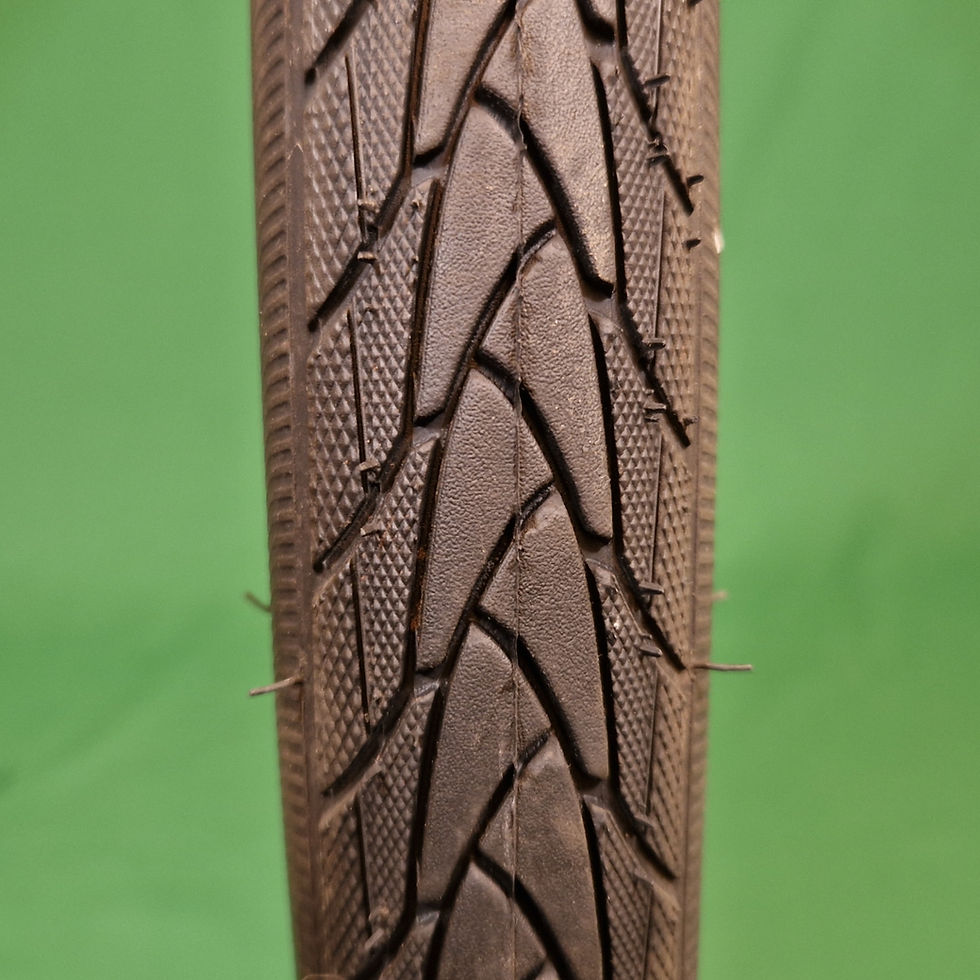Get the Best Bang for Your Buck: How to Evaluate a Bike's Components Like a Pro
- Matt Murphy
- Feb 26, 2023
- 4 min read
When looking to purchase a bike, it can be overwhelming to try to understand the various components and qualities that make up a bike. However, evaluating a bike's components and quality is essential in ensuring that you get the best value for your money and a bike that meets your specific needs. In this article, we will go over the key components to evaluate when assessing a bike's quality.

Frame
The frame is the foundation of the bike and is the component that all other parts attach to. When evaluating the quality of a bike's frame, there are a few factors to consider. First, look at the material used to make the frame. Steel & Aluminum is the most common material used for entry-level bikes, while carbon fiber and titanium are higher-end options. Carbon fiber and titanium offer superior strength and lighter weight, but come with a higher price tag.
Next, look at the quality of the welding and construction. A well-constructed frame will have smooth, clean welds and no visible gaps or blemishes. The frame should also be sturdy and not flex when pressure is applied.
Wheels
The wheels are another important component to evaluate when assessing a bike's quality. The quality of the wheels will affect the bike's performance, ride quality, and durability. Look for wheels that are true (meaning they spin straight without wobbling), well-spoked, and have a high-quality hub. Higher-end bikes will often have wheels with fewer spokes and more aerodynamic designs, which can improve speed and performance.

Drivetrain
The drivetrain is the set of components that allows you to change gears and pedal the bike. When evaluating the quality of a bike's drivetrain, consider the following:
Number of gears: More gears offer greater versatility and the ability to tackle different terrains. Higher-end bikes will typically have more gears, with some offering up to 27 - 30 speeds.
Shifters: Look for shifters that are easy to use and responsive. Higher-end bikes will often have more ergonomic shifters that allow for faster and more precise shifting.
Derailleurs: The quality of the derailleurs (the components that move the chain from one gear to another) will greatly affect the bike's performance and ease of use. Look for derailleurs that are well-made, easy to adjust, and smooth in operation.
Brakes
The brakes are one of the most important components on a bike and are essential for safety. There are two main types of brakes: rim brakes and disc brakes. Rim brakes are the traditional type of brake and use pads to slow the bike down by squeezing against the rim of the wheel. Disc brakes are newer and use pads to grip onto a rotor attached to the wheel hub.
When evaluating the quality of a bike's brakes, consider the following:
Braking power: Look for brakes that offer strong stopping power and are easy to modulate.
Brake pads: Look for brake pads that are high-quality and easy to replace.
Type of brakes: Disc brakes offer greater stopping power and are better for wet or muddy conditions, but are more expensive. Rim brakes are more affordable and work well in dry conditions.

Suspension
If you plan on doing any off-road riding or biking on rough terrain, you may want to consider a bike with suspension. Suspension helps absorb bumps and shocks, making for a smoother and more comfortable ride. When evaluating the quality of a bike's suspension, consider the following:
Type of suspension: There are two main types of suspension: front suspension (which only has suspension on the front fork) and full suspension (which has suspension on both the front and rear of the bike). Full suspension offers greater comfort and control, but is more expensive.
Quality of the suspension: Look for suspension that is well-made, easy to adjust, and provides good performance. Higher-end suspension systems will often have more adjustability and allow for greater customization.
Other components
In addition to the main components listed above, there are a few other components to consider when evaluating a bike's quality:
Handlebars: Look for handlebars that are comfortable and easy to grip. Higher-end bikes will often have ergonomic handlebars that allow for multiple hand positions and greater comfort on long rides.
Saddle: A good saddle is essential for comfort on long rides. Look for a saddle that is well-made, has good padding, and is the right size for your body.
Pedals: While pedals are a relatively minor component, they can greatly affect your riding experience. Look for pedals that are easy to clip in and out of and provide good traction.
Evaluating a bike's components and quality can be daunting, but it is an essential step in finding the right bike for you. By considering factors such as the frame, wheels, drivetrain, brakes, and suspension, you can ensure that you are getting a bike that meets your specific needs and provides good value for your money. Keep in mind that higher-end bikes will often have better components, but also come with a higher price tag. By understanding the key components and what to look for, you can make an informed decision and find the perfect bike for your riding needs.




































Comments